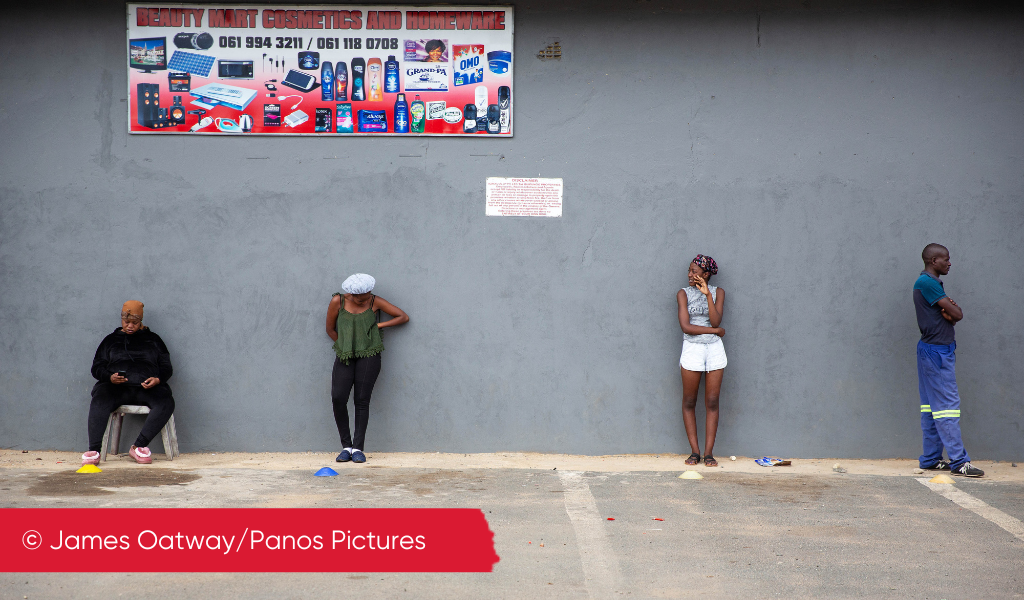New research shows how a World Health Organization concept fuelled online conspiracy theories before, during and after Covid-19 – and why they must be taken seriously for disease preparedness plans.

Long before Covid-19, the global health community was predicting ‘a serious international epidemic that could be caused by a pathogen currently unknown to cause human disease’. Termed ‘Disease X’, this predicted epidemic was not caused by any known pathogen.
Rather, it was a placeholder for a potential threat.
Disease X was first conceptualised by the World Health Organization (WHO) in 2018 as a tool around which discussions of epidemic preparedness could centre. The world had already faced H5N1 ‘bird flu’ (1997), SARS (2003), H1N1 ‘swine flu’ (2009), MERS (2012), the West African Ebola outbreak (2014-2016) and Zika (2015-2017).
And so the imaginary ‘Disease X’ was added to WHO’s list of priority, and real, infectious diseases.
Disease narratives
Prediction of Disease X fuelled conspiracy theories around the intentional creation of a menace that could destroy some populations and benefit others. It therefore provided an opportunity to study how a scientific concept was transformed, amplified and applied in online discussions and narratives before and after Covid-19.
Our analysis was done by conducting internet searches and using the media monitoring software Meltwater during two periods in 2019 (pre Covid) and 2020 (during Covid). A total of 309 posts and publications were analysed, comprising 144 from the ‘pre-Covid’ period and 165 from the ‘during Covid’ period. All were then uploaded and analysed in NVivo. We focused on how the concept of Disease X was applied by ‘non-experts’ to construct meaning from risk, uncertainty and response – and the work draws some general observations around power, fear and danger.
The narratives we identified have provided insight into how people create meaning when faced with a scientific concept and a global health crisis, with the idea that further crises are still to come. This has relevance given that Disease X in Africa is still a perceived threat.
Disease risk and meaning
The findings provide concrete examples of how conceptions of risk and meanings are constructed and circulated online during times of uncertainty. We found that these narratives were fed by different ideas, empirical evidence and scientific concepts, such as that of Disease X.
Perceptions of Africa as unprepared for pandemics and ripe for financial exploitation contributed to discourse about Disease X and routes to its elimination. Seven overarching themes were identified: cause(s) of Disease X, Disease X and African destruction, illness experiences, prediction, preparedness, response and pandemic imaginary.
Changing perceptions of disease cause
How the perceived causes of Disease X changed over time is of particular interest. In the six months prior to Covid, there was more emphasis on the potential role of the military and the human role in zoonotic spillovers, linked to evidence from epidemics such as Ebola in West Africa. Bats were often called out as Disease X’s likely cause, supported by evidence from previous outbreaks, and linked to a disease that would be worse for the African continent than Ebola.
Other early cause narratives focused on military intervention and, by several posts from bloggers working in global health or online news articles, the over-use of antibiotics.
Bushmeat and intensive farming remained central as identified possible causes, both during and before the Covid-19 epidemic, with marketplace and eating practices in Africa and China often blamed. As Covid-19 was first being identified in China, cause narratives simultaneously shifted to include reflection on Chinese drilling in Africa and chemicals. The example of an alleged ‘bleeding eye disease’ speculated by some online to be the next Disease X in Ethiopia, but denied by official bodies, was often cited.
By the beginning of 2020, after Covid-19 had been identified as a health issue of international concern, narratives began to centre on Covid-19 as Disease X. Others questioned the inactions that led to its outbreak and could therefore cause a future Disease X. Many narratives interwove the African continent and China and questioned the role of the circulation of people and goods in the emergence and spread of the disease.
Broad differences in the interpretations of Disease X as likely not yet having arrived in Africa during the early months of the Covid-19 outbreak corresponded with a representation of Covid-19 as a foreign, possibly invented, and likely benign, entity in many places that have demonstrated resilience to the pandemic.
Risk communication
Such narratives of risk and how future epidemics are imagined are important to consider. Disease X in Africa still looms as a perceived threat. Risk Communication and Community Engagement (RCCE) programmes therefore need to address them. The imagined future that people draw from to consider health threats and their management not only demonstrates social and political representations, but also must shape response and preparation.
Further, the study finds particular relevancy now, as online narratives about Covid-19 vaccination continue to shape vaccine anxiety by drawing upon similar conceptions of agency and inequality throughout the world.